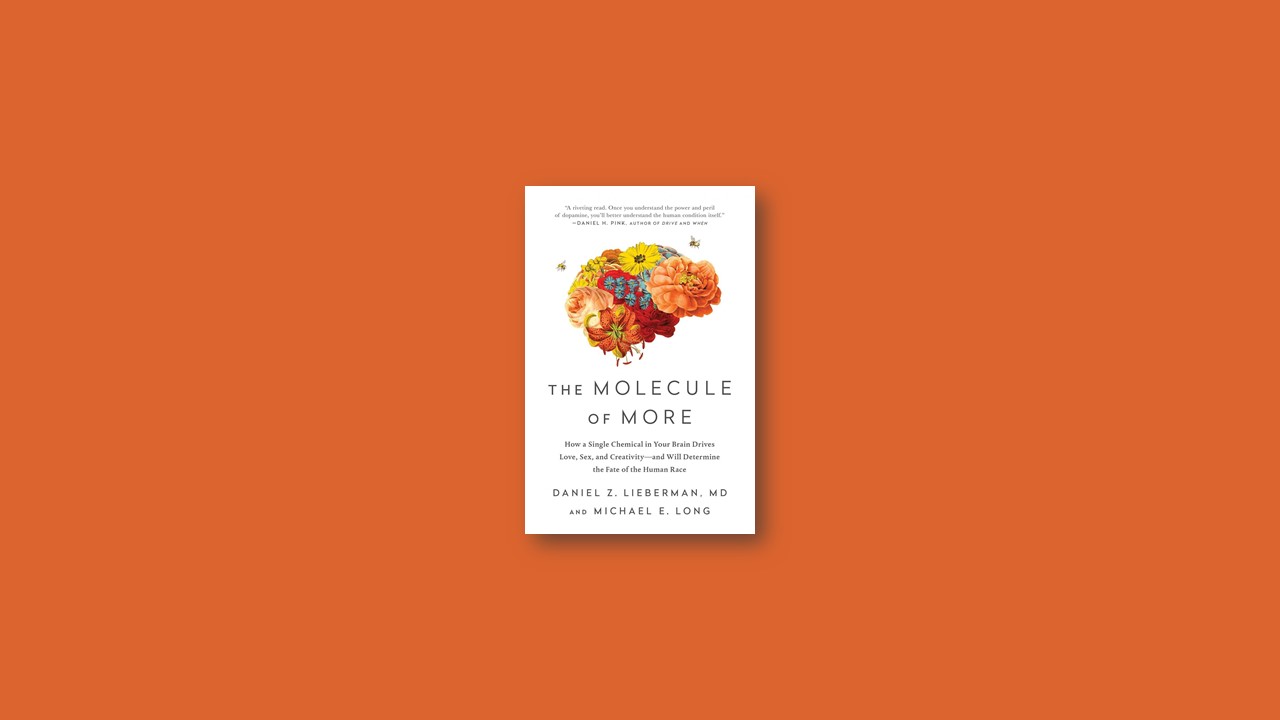LOVE
Dopamine got the nickname “the pleasure molecule” based on experiments with addictive drugs. The drugs lit up dopamine circuits and test participants experienced euphoria. It seemed simple until studies done with natural rewards—food, for example—found that only unexpected rewards triggered dopamine release.
Dopamine responded not to reward, but to reward prediction error: the actual reward minus the expected reward. That’s why falling in love doesn’t last forever. When we fall in love, we look to a future made perfect by the presence of our beloved. It’s a future built on a fevered imagination that falls to pieces when reality reasserts itself twelve to eighteen months later. Then what? In many cases it’s over. The relationship comes to an end, and the search for a dopaminergic thrill begins all over again.
Alternatively, the passionate love can be transformed into something more enduring. It can become companionate love, which may not thrill the way dopamine does, but has the power to deliver happiness—long-term happiness based on H&N neurotransmitters such as oxytocin, vasopressin, and endorphin.
It’s like our favorite old haunts—restaurants, shops, even cities. Our affection for them comes from taking pleasure in the familiar ambience: the real, physical nature of the place. We enjoy the familiar not for what it could become, but for what it is. That is the only stable basis for a long-term, satisfying relationship. Dopamine, the neurotransmitter whose purpose is to maximize future rewards, starts us down the road to love. It revs our desires, illuminates our imagination, and draws us into a relationship on an incandescent promise. But when it comes to love, dopamine is a place to begin, not to finish. It can never be satisfied. Dopamine can only say, “More.”
DRUGS
It’s natural to confuse wanting and liking. It seems obvious that we would want the things that we will like having. That’s how it would work if we were rational creatures, and despite all evidence to the contrary, we persist in thinking that we are rational creatures. But we’re not. Frequently we want things that we don’t like. Our desires can lead us toward things that may destroy our lives, such as drugs, gambling, and other out-of-control behaviors.
The dopamine desire circuit is powerful. It focuses attention, motivates, and thrills. It has a profound influence over the choices we make. Yet it isn’t all-powerful. Addicts get clean. Dieters lose weight. Sometimes we switch off the TV, get off the couch, and go for a run. What kind of circuit in the brain is powerful enough to oppose dopamine? Dopamine is. Dopamine opposing dopamine. The circuit that opposes the desire circuit might be called the dopamine control circuit.
Why would the brain develop circuits that work against each other? Wouldn’t it make more sense to have everyone pulling together, so to speak? In fact, no. Systems that contain opposing forces are easier to control. That’s why cars have both an accelerator and a brake, and why the brain uses circuits that counter each other.
Not surprisingly, the dopamine control circuit involves the frontal lobes, the part of the brain that is sometimes called the neocortex because it evolved most recently. It’s what makes human beings unique. It gives us the imagination to project ourselves further into the future than the desire circuit can take us, so we can make long-term plans. It’s also the part that allows us to maximize resources in that future by creating new tools and using abstract concepts; concepts that rise above the here-and-now experience of the senses, like language, mathematics, and science. It’s intensely rational.
DOMINATION
The dopamine system as a whole evolved to maximize future resources. In addition to desire and motivation, which get the ball rolling, we also possess a more sophisticated circuit that gives us the ability to think long term, make plans, and use abstract concepts such as math, reason, and logic.
Looking into the longer-term future also gives us the tenacity we need to overcome challenges and accomplish things that take a long time, things like getting an education or flying to the moon. It also gives us the ability to tame the hedonistic urges of the desire circuit, suppressing immediate gratification to achieve something better. The control circuit suppresses H&N emotion, allowing us to think in a cold, rational way that’s often required when hard decisions need to be made, such as sacrificing the well-being of one person for the benefit of others.
The control circuit can be crafty. Sometimes it charges straight ahead and dominates a situation through the power of confidence. Other times it leads to submissive behaviors that induce others to cooperate with us, multiplying our ability to get things done and reach our goals.
Dopamine yields not just desire but also domination. It gives us the ability to bend the environment and even other people to our will. But dopamine can do more than give us dominion over the world: it can create entirely new worlds, worlds that may be so astonishing, they could have been created only by a genius—or a madman.
PROGRESS
Dopamine-driven technological advances make it ever easier for us to gratify our needs and desires. Grocery store shelves are packed with constantly changing “new and improved” products. Planes, trains, and automobiles take us wherever we want to go, cheaper and faster than ever before. The internet provides us with virtually unlimited entertainment options, and so much cool stuff is brought to market each year that we need crowds of journalists to keep us up to date on new ways to spend our money.
Dopamine drives our lives faster and faster. It takes more education to keep up. A graduate degree is as necessary today as a college education was a generation ago. We work longer hours. There are more memos to read, reports to write, and emails to be answered. It never stops. We are expected to be available at all times of the day and night. When someone at work wants us, we must respond immediately. Advertisements show a smiling man responding to texts on the beach, or a woman by the hotel pool, checking her cell phone screen to tap into a video feed of her empty house. What a relief. Nothing happened since the last time she checked, 15 minutes ago. She’s got everything under control.
With so many ways to have fun, so many years to devote to education, and so much time to spend working, something has to give, and that something is family.
Future-focused dopamine no longer drives couples to have children because people who live in developed countries don’t depend on their children to support them in their old age. Government-funded retirement plans take care of that. That frees up dopamine to move on to other things like TVs, cars, and remodeled kitchens.
The end result is demographic collapse. About half the world lives in a country with below replacement fertility. Replacement fertility is the number of children each couple must have to prevent a decline in the population. In developed countries the number is 2.1 per woman in order to replace the parents, and a bit more to account for early deaths. In some developing countries replacement fertility is as high as 3.4 because of high rates of infant mortality. The worldwide average is 2.3.
HARMONY
Our dopamine circuits are what make us human. They are what give our species its special power. We think. We plan. We imagine. We elevate our thoughts to ponder abstract concepts such as truth, justice, and beauty. Within those circuits we transcend all barriers of space and time. We thrive in the most hostile environments—even in outer space—thanks to our ability to dominate the world around us. But these same circuits can also lead us down a darker path, a path of addiction, betrayal, and misery. If we aim to be great, we will probably have to accept the fact that misery will be a part of it. It’s the goad of dissatisfaction that keeps us at our work while others are enjoying the company of family and friends.
But those of us who prefer a life of happy fulfillment have a different task to accomplish: the task of finding harmony. We have to overcome the seduction of endless dopaminergic stimulation and turn our backs on our never-ending hunger for more. If we are able to intermingle dopamine with H&N, we can achieve that harmony. All dopamine all the time is not the path to the best possible future. It’s sensory reality and abstract thought working together that unlocks the brain’s full potential. Operating at its peak performance, it becomes capable of producing not only happiness and satisfaction, not only wealth and knowledge, but a rich mixture of sensory experience and wise understanding, a mixture that can set us down the path toward a more balanced way of being human.


